Doing Business in Today's China
- Category: On Our Radar
- Published: Wednesday, 18 July 2018 07:37
- Anne Dowd Moretti
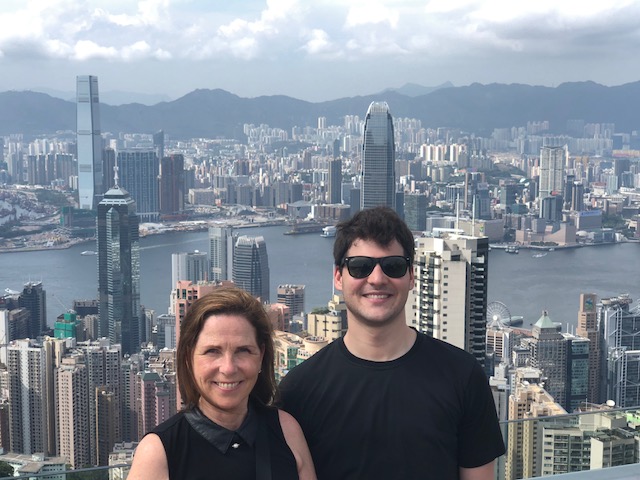 A lot has changed since my first trip to China 31 years ago. Back then, I was an international banking officer covering Asia. I used a map and my decent Chinese allowed me to get around. Crossing the wide boulevards, I dodged the hundreds of bikers whizzing by.
A lot has changed since my first trip to China 31 years ago. Back then, I was an international banking officer covering Asia. I used a map and my decent Chinese allowed me to get around. Crossing the wide boulevards, I dodged the hundreds of bikers whizzing by.
I recently went back in China for ten days with my eldest son Marcus. We travelled to three cities: Beijing, Shanghai and Hong Kong to develop my Chinese real estate networks. The juxtaposition of my memories of analog China with the sight of my millennial son effortlessly maneuvering through iPhone apps was fascinating.
We began the trip in Beijing where I was an exhibitor at the three-day Luxury Property Showcase event. This is a huge, invitation-only event featuring over 120 international real estate developers and agencies from 35 countries. It was held in a large conference hall at the Wanda Vista Hotel, and exhibitors like me were there to showcase their properties to thousands of wealthy Chinese and international real estate investors.
It was a bit like speed dating as the exhibitors were all seeking to grab the attention of attendees passing by and then pitch 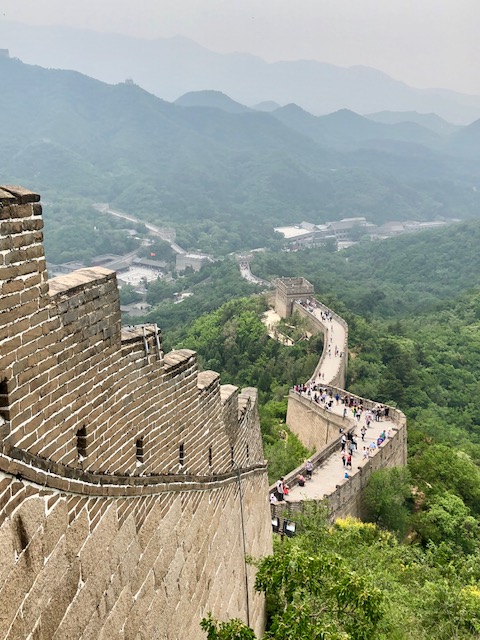 them on their market, whether it was Dubai, Australia, or Ireland. I outfitted our Julia B. Fee Sotheby’s booth in beautiful Chinese and English displays with TV video and property brochures in dual languages. We had a Chinese translator but many of the attendees spoke good English.
them on their market, whether it was Dubai, Australia, or Ireland. I outfitted our Julia B. Fee Sotheby’s booth in beautiful Chinese and English displays with TV video and property brochures in dual languages. We had a Chinese translator but many of the attendees spoke good English.
Our booth by the door was quite popular as all the images of New York grabbed the attention of Chinese investors. By the third day, I had nearly lost my voice from talking so much. Everyone was connecting via Wechat, the social media and messaging site that has over a billion monthly users (including more than 100 million outside of China). Wechat was an integral part of the rapid meet and greet. Investors could quickly scan my Wechat QR code, and we were connected. No more business cards!
After the conference, Marcus and I went to the Badaling section of the Great Wall outside Beijing. We walked for a couple of hours on the wall in the withering heat. Still, it was exciting to see the wall again, and strangely, there were still few Western tourists there. There were however many Chinese tourists, including some very old people putting me to shame as they climbed up the uneven, rocky steps and walked the wall with us.
Beijing looks like a city that sprang up overnight, with big, boxy buildings reminiscent of many authoritarian countries. Yet the Prada and Gucci shops, Tesla and other luxury retailers are all doing brisk business. At night, once the sun goes down, the tall rectangular buildings suddenly light up, like the Vegas strip, with bright dazzling light shows, which give the city a lighter, festive atmosphere from its more serious day scene.
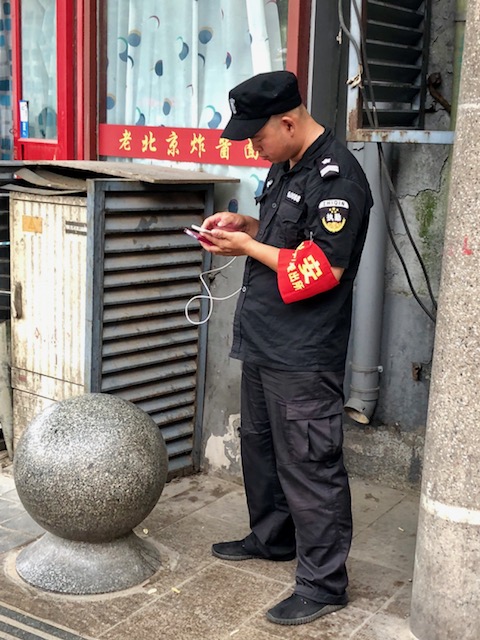 There are cameras everywhere. On every street corner, cameras are scanning faces, and recording images of any jaywalker who crosses before the light changes. I wonder how many times my image showed up on their screen before I realized why we were the only ones crossing.
There are cameras everywhere. On every street corner, cameras are scanning faces, and recording images of any jaywalker who crosses before the light changes. I wonder how many times my image showed up on their screen before I realized why we were the only ones crossing.
An initial introduction to this state presence starts at Beijing airport where Waiguoren “foreigners” are directed to stop at special kiosks to be fully finger printed before entering the country. From the outset one senses the tight security surveillance and the sense that big brother is watching. The positive thing about this is that while walking through the streets at night, we felt quite safe, as the cameras were always there.
Hotels can be expensive, but transportation was surprisingly cheap. A 75-minute cab ride from the airport to hotel was only 96CNY (Chinese Yuan) which is about $14. Marcus arrived in Beijing after I did, and he downloaded the DiDi app (China’s version of Uber), and he paid only 76 CNY. From that lesson, we quickly learned to use DiDi throughout our trip as it was so easy and cheap to get around both Beijing and Shanghai using DiDi.
We took the bullet train to Shanghai from Beijing and after a 4 hour 45 minute train ride we exited the train station into the steamy heat of a June evening in Shanghai. As we wound our way through the streets towards the Bund, Shanghai revealed itself as an incredibly intriguing architectural city, with old European style architecture and many Art Deco buildings, interspersed with new ultra modern buildings downtown. Shanghai is breathtakingly beautiful at night, with cityscape views and stunning waterfront scenes.
We were cautioned about the hot temperatures during the day; however, traveling with an adventurous and hungry Millennial 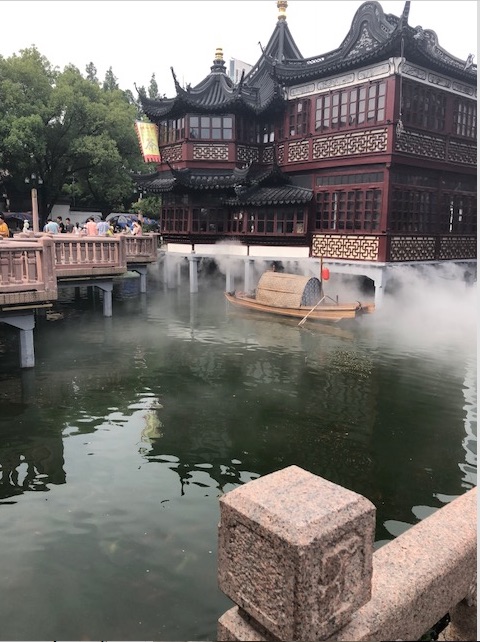 meant walking for hours in the heat, and patching band aids on my feet as we walked cobble stone streets to find a tiny out of the way place that Marcus found on Michelin. As we sat tightly, side by side, facing an elderly couple happily slurping their soup across from us, we were served up a piping hot, succulent plate of duck. I believe Shanghai is the largest city in the world with 24 million plus people, but it has many little intimate neighborhoods with tree-lined streets reminiscent of New York’s Greenwich Village. Bamboo scaffolding, 10-stories high, wrap new buildings under construction. In the streets, men with pushcarts, bicyclists, mopeds and cars all compete for space on the roads. The restaurants and the atmosphere are bustling in Shanghai, and if you ever see the name Hot Pot, believe it! We both enjoy spicy food, but the boiling soup creation we made at our table ended up nearly searing the flesh from our lips as the noodles and vegetable mixture was infused with the hottest red Chile peppers on the planet.
meant walking for hours in the heat, and patching band aids on my feet as we walked cobble stone streets to find a tiny out of the way place that Marcus found on Michelin. As we sat tightly, side by side, facing an elderly couple happily slurping their soup across from us, we were served up a piping hot, succulent plate of duck. I believe Shanghai is the largest city in the world with 24 million plus people, but it has many little intimate neighborhoods with tree-lined streets reminiscent of New York’s Greenwich Village. Bamboo scaffolding, 10-stories high, wrap new buildings under construction. In the streets, men with pushcarts, bicyclists, mopeds and cars all compete for space on the roads. The restaurants and the atmosphere are bustling in Shanghai, and if you ever see the name Hot Pot, believe it! We both enjoy spicy food, but the boiling soup creation we made at our table ended up nearly searing the flesh from our lips as the noodles and vegetable mixture was infused with the hottest red Chile peppers on the planet.
Sad to leave Shanghai, we flew to Hong Kong, which was as loud and cosmopolitan and fast-paced as I remembered. Most of the cab drivers there had a few smart phones affixed to their windshields, and they would carry on texting conversations with friends as they zoomed along, turning right or left, whatever the map guidance directed. In Hong Kong my limited Chinese was of little help as the locals all speak Cantonese. And Marcus’ Google translate speech wasn’t working too well. So we used a lot of gestures, but found our way to the markets, including the Jade market and then the night markets where we wandered around looking at displays of fake designer bags, jewelry, and all kinds of plastic toys and bric-a-brac. We took the trolley up to the Peak, which offers 360o views of Hong Kong’s skyscrapers and Victoria Harbour and towards the other side, quiet views of the mountains of the New Territories.
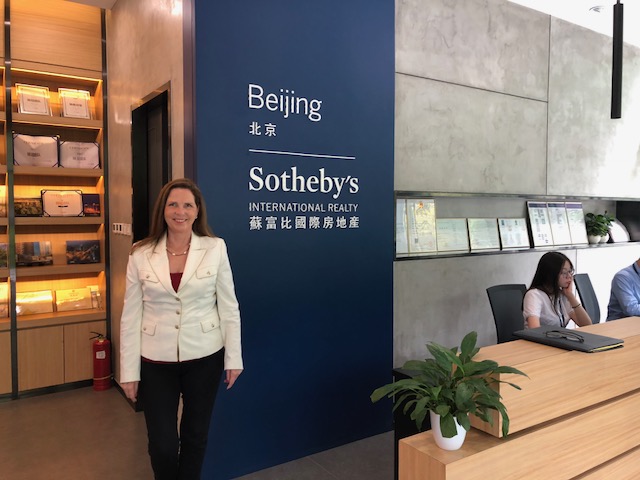 It was a successful trip. I visited our Sotheby’s offices in Beijing and Hong Kong and spoke with the new Manager of the Shanghai Sotheby’s affiliate opening soon. Check! But, as much as the trip was to make connections for my real estate business, it was quite a special experience to travel through China with my son and to see how it’s modernized in so many ways. The rapid pace of modernization is exemplified by nearly every person holding an iphone, but the fundamental beauty and graciousness of the people and the places remain uniquely Chinese.
It was a successful trip. I visited our Sotheby’s offices in Beijing and Hong Kong and spoke with the new Manager of the Shanghai Sotheby’s affiliate opening soon. Check! But, as much as the trip was to make connections for my real estate business, it was quite a special experience to travel through China with my son and to see how it’s modernized in so many ways. The rapid pace of modernization is exemplified by nearly every person holding an iphone, but the fundamental beauty and graciousness of the people and the places remain uniquely Chinese.







